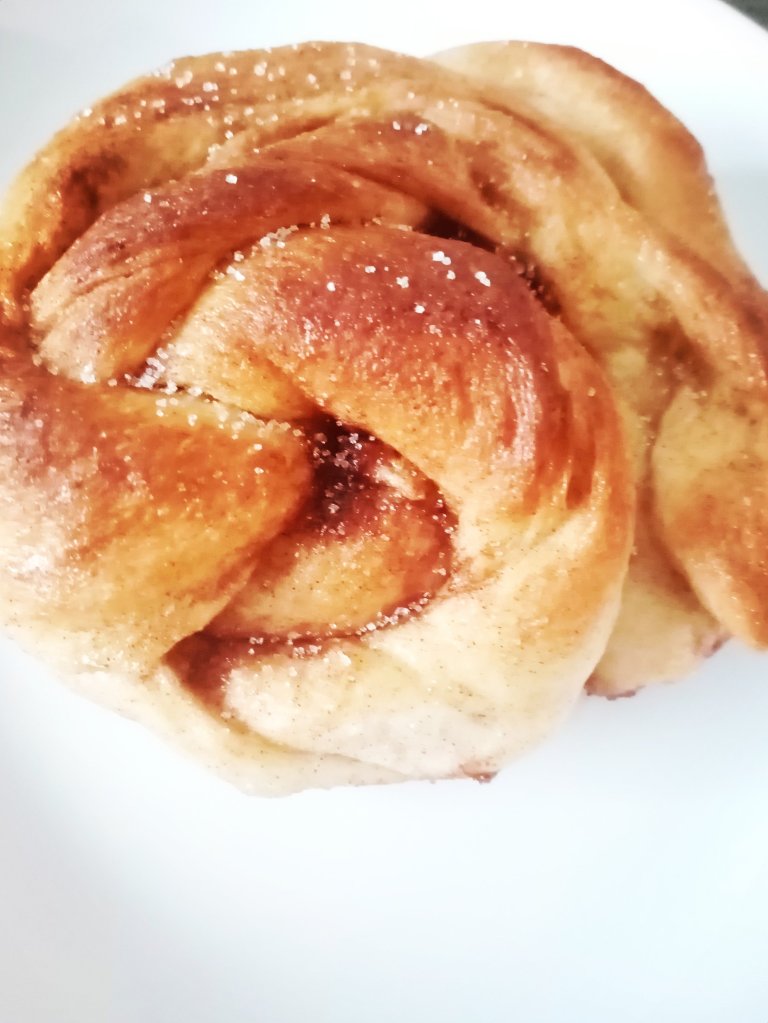
Swedish cinnamon buns differ from their American counterparts in several ways – the inclusion of cardamom, the wonderful looping and knotting to form them, and the simple glaze that traditionally uses Swedish pearl sugar. This is a small batch recipe that I made for family – feel free to double it!
Ingredients
Group 1 – Activating Yeast
- 1 1/2 tsp surebake yeast
- 1 1/2 Tablespoons sugar
- 1/2 cup warm water (or milk)
Group 2 – Making Dough
- 2 cups flour
- 1 tsp ground cardamom
- 1/2 tsp salt
- 4 Tablespoons rice bran oil (or 1/4 cup melted butter)
- 2 Tablespoons sugar
- 3 Tablespoons water
Group 3 – Filling
- 1/2 cup soft brown sugar
- 1 Tablespoon ground cinnamon
- 1/2 tsp ground cardamom
- 1/4 cup buttery nuttelex (or butter, or margarine)
- Few drops vanilla
Group 4 – Glaze (optional but traditional)
- 1 egg + 1 Tbsp water + Swedish Pearl Sugar to decorate.
Allergy: free from dairy*, soy, nuts, egg*.
Note: We differed from traditional recipes by not using dairy or egg but I have included these in the recipe notes so that families can make their own choices.
Directions
- Combine Group 1 (yeast, sugar, warm water) in a bowl. Wait about 10 minutes until frothy and giving a yeasty smell (indicating that the yeast has activated). In winter, I use a metal bowl and sit it in a sink of hot water.
- Add Group 2 to Group 1. Into the bowl, add the flour, cardamom, salt, rice bran oil, and sugar. Combine. Add the 3 Tbsp of water. You will now be able to use fingers to mould into dough.
- Fold and knead the dough until smooth and elastic. Cover and place in a warm place until doubled in size. Tip: in winter, I do some kneading for the share joy of it and then place in the breadmaker on a dough setting!
- Use Group 3 to make the filling. Combine brown sugar, cardamom, cinnamon, nuttelex/butter, and vanilla. Mix until smooth.
- Folding and shaping:
- Roll out the dough on a lightly floured surface and form it into a large rectangle. Evenly spread the filling over it.
- Lift the top edge of the dough and fold the top 1/3 down to the middle; lift the bottom edge of the dough and lift up to the middle.
- Roll the dough again into a large rectangle.
- Cut the dough into 6 strips.
- Pick up a strip, stretch and twist lightly, loop twice around the three middle fingers of your other hand, then once over the loop, and coil with the bottom tucked in.
- Place the knotted cinnamon buns onto a baking sheet and place in a warm place. Allow them time to rise until almost doubled in size.
- Preheat the oven to 180’C / 350’F.
- While the oven is heating, make up the egg wash if desired. Whisk the egg and water, then lightly brush over the scrolls. Sprinkle with crunchy Swedish pearl sugar.
- Bake for 15 – 20 minutes until golden brown. Serve warm.
Nutritional Information
Based on 6 servings.
| Average Quantity per Serving | |
| Energy | 1692.7 kJ (404kcal) |
| Protein | 4.8 g |
| Fat, total | 17.9 g |
| – saturated | 4.1 g |
| Carbohydrate | 55.2 g |
| – sugars | 24.1 g |









